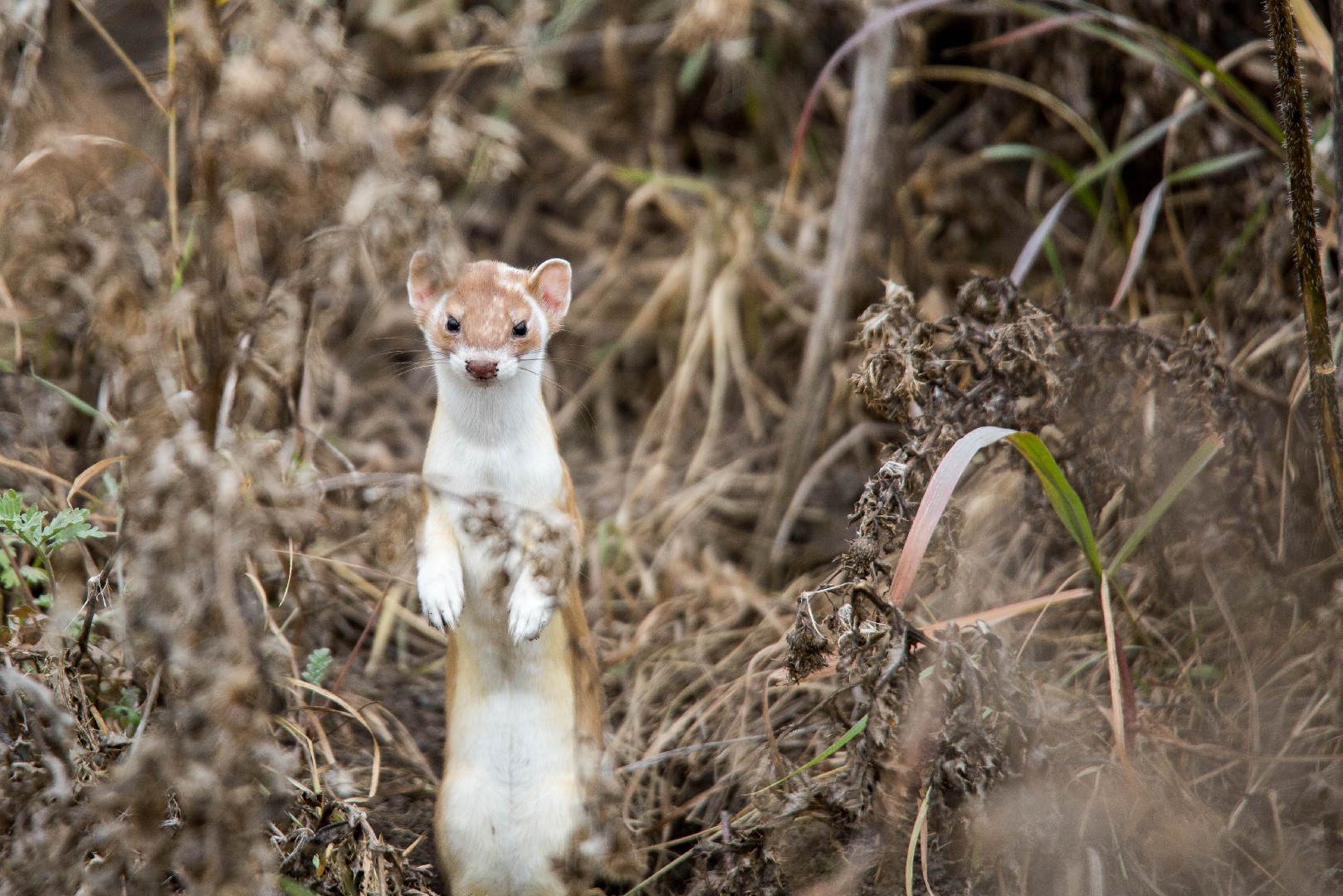Long-tailed weasel
A species of Weasel, Also known as Big stoat Scientific name : Mustela frenata Genus : Weasel
Long-tailed weasel, A species of Weasel
Also known as:
Big stoat
Scientific name: Mustela frenata
Genus: Weasel
Content
Description General Info
 Photo By David A Mitchell , used under CC-BY-2.0 /Cropped and compressed from original
Photo By David A Mitchell , used under CC-BY-2.0 /Cropped and compressed from original Description
The long-tailed weasel is one of the larger members of the genus Mustela in North America. There is substantial disagreement both on the upper end of their size and difference in size by sex by source: one indicates a body length of 300–350 mm (12–14 in) and a tail comprising 40–70% of the head and body length. It adds that in most populations, females are 10–15% smaller than males, thus making them about the same size as large male stoats, according to a second source. A third states they range from 11 to 22 inches (280–560 mm) in length, with the tail measuring an additional 3 to 6 inches (80–150 mm). It maintains the long-tailed weasel weighs between 3 and 9 ounces (85-267 g) with males being about twice as large as the females. The eyes are black in daylight, but glow bright emerald green when caught in a spotlight at night. The dorsal fur is brown in summer, while the underparts are whitish and tinged with yellowish or buffy brown from the chin to the inguinal region. The tail has a distinct black tip. Long-tailed weasels in Florida and the southwestern US may have facial markings of a white or yellowish colour. In northern areas in winter, the long-tailed weasel's fur becomes white, sometimes with yellow tints, but the tail retains its black tip. The long-tailed weasel moults twice annually, once in autumn (October to mid-November) and once in spring (March–April). Each moult takes about 3–4 weeks and is governed by day length and mediated by the pituitary gland. Unlike the stoat, whose soles are thickly furred all year, the long-tailed weasel's soles are naked in summer. The long-tailed weasel has well-developed anal scent glands, which produce a strong and musky odour. Unlike skunks, which spray their musk, the long-tailed weasel drags and rubs its body over surfaces in order to leave the scent, to mark their territory and, when startled or threatened, to discourage predators. 
General Info
Lifespan
4-10 years
Diet
Long-tailed weasel is a carnivorous mammal with predilection for small mammals and insects. Its dietary regimen predominantly includes voles, mice, birds, eggs, frogs, and insects, depending on seasonal availability.
Appearance
Long-tailed weasel is a small, slim mammal with short legs and a long, slender body. It has dense, soft underfur covered by shiny, waterproof guard hairs. Its distinctive coloration consists primarily of brown, with a lighter belly and a black tip on its tail. Its sharp face features round ears and a pointed snout. No significant differences exist in size or coloration due to age or gender.
Behavior
Long-tailed weasel is predominantly solitary and nocturnal, known for its exceptional climbing and swimming abilities. This species utilizes a dens system and often takes over burrows from other animals. It marks its territory via scent glands, delineating specific areas for hunting. Adaptable and agile, long-tailed weasel is a versatile hunter with a diet of small mammals and insects.
Population
Stable
Scientific Classification
Phylum
Chordates Class
Mammals Order
Carnivores Family
Mustelids Genus
Weasel Species
Long-tailed weasel